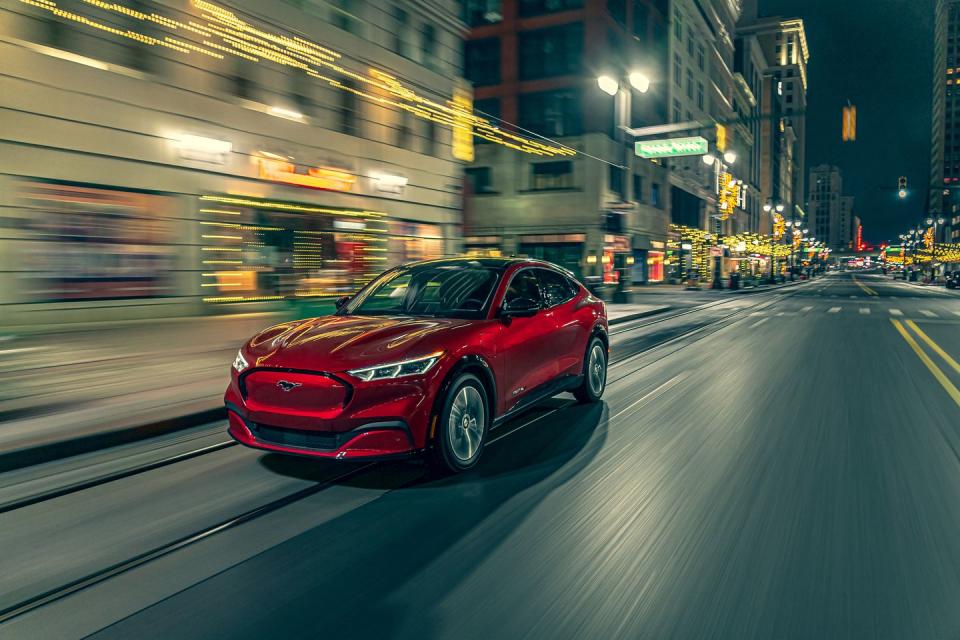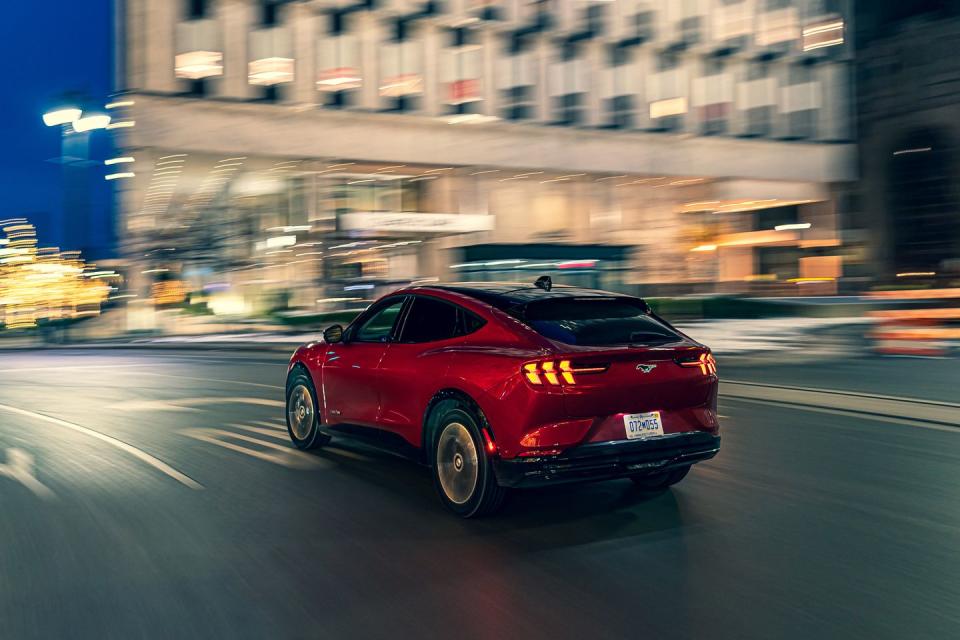Tested: 2021 Ford Mustang Mach-E Lives up to the Hype, If Not the Name


From the February/March 2021 issue of Car and Driver.
UPDATE 2/1/21: This review has been updated with test results.
The Mustang Mach-E wasn't always going to be a Mustang. It started life as an electrified and lifted Focus. Somewhere along the way, Ford execs realized that if the company wanted to sell its new EV in meaningful quantities, it would have to build something people could get excited about. So Jim Farley, then Ford's president of global markets, ordered the design team to go back to the drawing board two years before the car's slated unveiling, a schedule not normally conducive to delivering a functioning product. His instruction: Think Mustang. The resulting vehicle certainly looks the part of a pony car inflated into a crossover. But for the year between the Mach-E's unveiling and our first drive, we've been wondering if it could deliver on the promise of that long hood. Now we know.

The answer is yes. And no. Whether you end up thinking the Mach-E is worthy of the Mustang name will depend a lot on why you like Ford's pony car. If you like Mustangs because they're attractive and quick, the Mach-E should pass your personal litmus test. If you are looking for a roaring engine and an athletic chassis capable of carving up back roads, you will be disappointed.
The Mach-E is the best-looking vehicle in Ford's current lineup apart from the actual Stang, and it's also more attractive than the majority of crossovers. The $56,200 extended-range all-wheel-drive model that we tested made it to 60 mph in 5.1 seconds. That's quick for something with 30 cubic feet of storage space in the back (plus another five cubic feet in the frunk), but that's still way off the Tesla Model Y's pace. Ford says the forthcoming 480-hp GT Performance Edition should do the deed in a blistering 3.5 seconds, matching Tesla's claim for the Y Performance. Base rear-wheel-drive models with 266 horsepower and the smaller (and lighter) battery should come in around 6.0 seconds—still respectable for the genre.

The big-battery all-wheel-drive model has 346 horsepower and 428 pound-feet of torque, and the instant availability of all that torque gives the Mach-E that characteristic off-the-line swiftness that we've come to expect from electric vehicles. This heaviest Mustang ever was perfectly competent at tackling the autocross course that Ford set up for us, although the ute's prodigious weight was evident, particularly in the slalom section. Still, the Mach-E's skinny all-season tires aren't canyon carvers, and they manage just 0.85 g on the skidpad, which is less stick than you'll see from a Ford Edge ST (0.89 g) or a Tesla Model Y (0.88 g).
So the Mach-E is quick enough to carry the Mustang name. But we've driven a lot of Mustangs, and we don't like them just because they're quick. The Mustang lineup includes some of our favorite engines, with intoxicating exhaust notes and more character than any electric motor. They are also thrilling to drive. The Shelby models, in particular, deliver direct chassis responses and steering that's hyper-communicative, and the risk of getting bucked off the pavement due to your own inattention or lack of skill is quite real. Plus: those exhaust notes. Mustangs aren't for everyone, which is exactly why the idea of aiming the Mach-E at the masses is so controversial.

Unlike Ford's V-8-powered coupes, the Mustang Mach-E doesn't traffic in barely sublimated danger. It's quiet inside, and there's not so much as a jostle or bump through the steering column no matter how bad the road is. The ride is smooth, too, the isolation almost complete. This is its own kind of triumph in an EV, where the lack of an engine soundtrack can magnify perceptions of wind and road noise. Plenty of drivers—especially crossover drivers—are perfectly happy to be isolated from the road. But when we think Mustang, hushed serenity isn't what comes to mind.
Then there are all the other features that don't jibe with our past Mustang experiences simply because they're new. The button-actuated doors feel novel and seem less likely to malfunction than the perpetually frustrating pop-out handles employed by other automakers, but when the doors are locked, there's a maddening delay between triggering the button and the door opening. At least the massive 15.5-inch vertically oriented infotainment touchscreen is intuitive to operate.

 Yahoo Autos
Yahoo Autos 